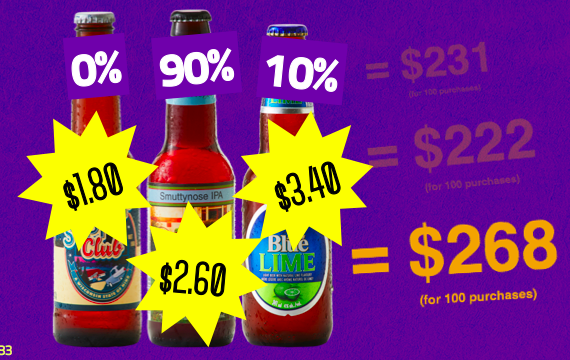


The Behavioral Psychology of Netflix's Plan to Charge Higher Prices - The Atlantic
Why You Should Never Ask Customers What They'll Pay
"An optimal price is one that is accepted but not without some initial resistance.
It is your job to both set that price and convince the customer"
- Principle 1: Pricing is Part of the Product
- Principle 2: Pricing Determines Your Customers
- Principle 3: Pricing is Relative
How to Get Customers to Want to Pay Even Before Building Your Product
"The first objective with your MVP (minimum viable product) is to learn. I’d much rather have 10 “all-in” early adopters I can give my full attention than 100 “on-the-fence” users any day."
"The first objective with your MVP (minimum viable product) is to learn. I’d much rather have 10 “all-in” early adopters I can give my full attention than 100 “on-the-fence” users any day."
...
"AIDA is an marketing acronym for Attention, Interest, Desire, and Action. I find it a useful framework for structuring these type of solution interviews.- Attention: Get the customer’s attention with your unique value proposition
- Interest: Use the demo to show how you will deliver your UVP and generate interest.
- Desire: secure strong customer commitments by triggering on desire.
- Action: Get a verbal, written, or pre-payment commitment that is appropriate."
Huber Payne Puto 1982 JoCR.pdf
Mastering the Art of Pricing: What the Textbooks Don't Teach You
"Pricing, ultimately, relies on so much more than data analysis: It’s rooted in human psychology and a touch of game theory. The lesson, then, is to show substantive value to the customer, or offer a point of comparison to anchor pricing options. Also: Showcase the high quality of your product and experiment with the perception of the product’s “fair” and reasonable value.
The highest art is to set a price that rewards you and your customer for building a lifetime relationship. That’s when you know that “the price is right.”
Mastering the Art of Pricing: What the Textbooks Don't Teach You
"Pricing, ultimately, relies on so much more than data analysis: It’s rooted in human psychology and a touch of game theory. The lesson, then, is to show substantive value to the customer, or offer a point of comparison to anchor pricing options. Also: Showcase the high quality of your product and experiment with the perception of the product’s “fair” and reasonable value.
The highest art is to set a price that rewards you and your customer for building a lifetime relationship. That’s when you know that “the price is right.”
No comments:
Post a Comment